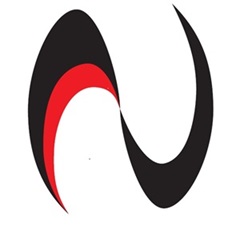PRT® TRIPOD SAFETY ADVISORY
Chest compression (placing sufficient weight or pressure on a client to restrict breathing), fatigue, client obesity, alcohol or drug use, heart conditions and/or other complicating medical and other factors (known and unknown to you) can all cause serious injury or death. HWC requires that a Tripod Modification be used for every person placed in the “Neutral Position” and that you “continuously monitor the physical and emotional safety of the client” for any evidence of emotional and/or physical distress in any of the PRT’s holding configurations (Standing, Settle, Supine or Neutral/Prone) for the duration of the hold.
The “Tripod Modification” is a “weight bearing bridge” used to support 100% of the weight of the PRT person, as demonstrated by the PRT Tripod Exercise (Module 7)), where class participants lay on the floor simulating they have someone in the Neutral Position. Its purpose is to demonstrate that each person being trained is capable of supporting their entire upper body weight on their outside elbow. The “Tripod Modification” distinguishes a Neutral Position PRT from any other prone or floor restraint because the entire weight of the PRT person is supported to eliminate chest compression; consistent with any policy that prohibits placing weight on a person’s back. The PRT is the only physical technique ever granted a (US and International) Patent for “An Apparatus and Method for Safely Maintaining a Restraining Hold on a Person.”
Whenever possible, there should be someone posted near the head of the client who is dedicated to CONTINUOUSLY MONITORING PHYSICAL AND EMOTIONAL SAFETY OF THE CLIENT.
Remain vigilant for any evidence of physical or emotional distress including, but not limited to, changes in or loss of consciousness, a sudden cessation of struggling, seizure, voiding of bladder or bowels, difficulty communicating, choking (indicating the possibility of aspiration), vomiting or heaving, changes in breath sounds, color, complaints of chest pain, difficulty breathing etc. Observe for the presence of gum, food or foreign objects in the mouth which may cause a choking incident. Consult with your organization’s medical staff if you have any medical or orthopedic concerns about the suitability of the PRT® in any of its configurations with a particular client. Contact us to discuss any concerns that you or your medical staff have and to help you to make adjustments to a hold for specific clients, including modifications for the casting of limbs, amputations, pregnancy, etc. Call us at 845-255-4031 during regular business hours or for technical assistance call or text anytime, even during a hold, directly at: 845-380 7585.
HWC recommends that every staff member with direct care responsibility or who could foreseeably be involved in a restraint receive CPR training.
If a client is in distress, assess the situation and determine what actions are appropriate, including, but not limited to:
- Releasing the client from the hold
- Calling 911
- Calling on-site or off-site medical staff
- Calling for assistance
- Implementing first aid
- Commencing CPR
- Physical examination
- Medical examination
Additionally:
- The “Tripod Modification” should be initiated immediately during all Neutral Position holds. Appropriate cushioning materials, like the PRT Tripod Stand™, can be placed under the weight-bearing (outside) elbow of the PRT person to extend the comfortable duration of the Tripod Modification.
- During an unassisted (solo) takedown, the PRT person is responsible for continuously observing and monitoring the client until other staff arrive on scene.
Always protect the client’s head from contact injuries with the floor with the combination of an appropriate cushioning material (nothing that may cause suffocation or difficulty breathing), and careful manual stabilization. - In Two Person Takedowns to the “Neutral Position”, when additional staff are not available, the leg assist person should leave his/her position at the client’s legs and position themselves at the client’s head to be completely dedicated to the task of continuously observing and monitoring the safety of the client and ensuring that the “Tripod Modification” is performed properly.
- If the PRT person is fatigued or, for any reason, unable to maintain a proper Tripod Modification, he/she can be relieved by transitioning someone else into the PRT position (as demonstrated during Module 7 Round-up conversation).
- Limit the overall number of takedowns by taking advantage of the walls and other stable structures for support and stability whenever possible. For in-facing standing PRT wall restraints, always back yourself to the wall first, then smoothly turn the client to face the wall on the tightest possible axis.
- It may be possible to avoid a Neutral Position if you gain compliance (or if policy dictates) by stopping at the “Settle Position”. Although the Settle Position is not as stable as a “Neutral Position” PRT, it can be additionally stabilized by changing to a “Modified Settle” (seated position), using the method described for pregnant females in Module 7. Use a wall, other stable objects or additional staff to help secure the hold and ensure that it remains upright and stable.
- Initiate the physical “letting go process” (module 11) and take other appropriate steps as needed to transition the client out of the Neutral Position as soon as the client completes his or her “recovery arc” and returns to a calm mind state.
